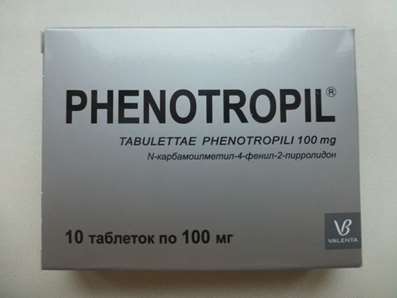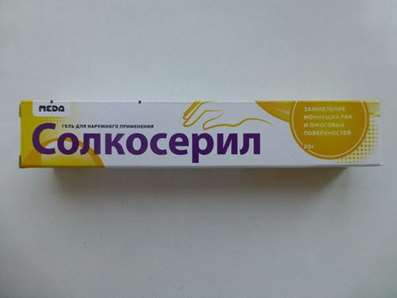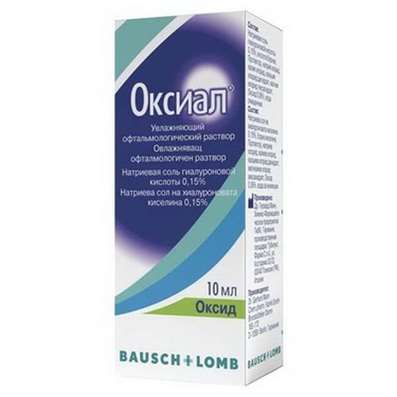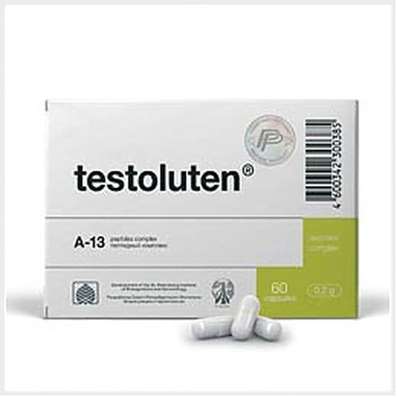Mildronate - Treatment Of Cardio-Neurological disorders during ischemia and hypoxia
13 Oct 2016
Cerebrovascular pathology has long moved from the category of a single medical problem in the social problem. Progression of vascular lesions of the brain results in significant disability, and in the later stages interfere with the ability to self-service and significantly reduces the quality of life. The key link is ischemic brain damage, or glutamate, cascade, which many researchers believe trigger excitotoxic damage and a major cause of neuronal death. One important component of effective control of sequellae of ischemic disorders is complex neurocytoprotective therapy. To correct sequellae of both acute and chronic ischemia of the brain need it’s necessary to act effectively in several directions simultaneously, normalizing metabolic changes, eliminating the cytokine imbalance transcription violations, reducing the severity of oxidative stress and excitotoxicity.
Cerebrovascular pathology has long been moved from the category of a single medical problem into a social problem. The progression of vascular lesions of the brain leads to significant disability, and in the later stages impairs the ability to self-service and greatly reduces the patient's quality of life. A key element is the ischemic brain damage, or glutamate cascade, which many researchers consider the trigger of excite-toxic damage, and the main cause of neuronal death. One of the important components of an effective correction of the consequences of ischemic disorders is complex of neuro-cytoprotective therapy. To correct for the effects of both acute and chronic brain ischemia is necessary to work effectively in several directions simultaneously, normalizing metabolic changes, eliminating the cytokine imbalance of transcription violations, reducing the severity of oxidative stress and excitotoxicity. Unfortunately, the ideal neuro-cytoprotective capable of simultaneously affect all of the above processes of today is not found, however neuro-cytoprotective complex is used in clinical practice. Of the large number available in the market must select neuro-cytoprotective Mildronate is the original drug, which has long been effectively used in cardiology, whereas in neurologic practice it has been applied recently, demonstrating its effectiveness as with acute and chronic cerebral ischemia. Efficiency of Mildronate is in the practice of treating patients with acute and chronic vascular disease was confirmed in studies carried out on the basis of major neurological centers in Russia. Now it is considered appropriate to use the combined neuro-protective treatment regimens using Mildronate (Meldonium).
Mildronate is preparation, correcting metabolism and energy supply of tissues, refers to a group cytoprotectors / antihypoxants, provides protection and power supply of different cells of the body in conditions of ischemia and increased payload. Because the primary indication for use has been and remains Mildronate® cardiac pathology, look at how it works on the example of pathophysiological disorders that occur in the heart during ischemia and hypoxia. The aging process of the body, as well as the aging of individual organs, including myocardium, accompanied by certain changes in the structure and functions that contribute to the spread of heart failure in the elderly and are responsible for the increased role of diastolic dysfunction in its pathogenesis. In addition, it is necessary to take into account the presence of the syndrome of mutual burdening age factors and cardiovascular disease.
Among the primary mechanisms of the progression of heart failure and its main etiological factors are hypertension and coronary heart disease – it is now recognized as the leading state of violation of neuro-humoral regulation of endothelial and who acquire the greatest value in people of older age groups due to the growing imbalance of the regulatory systems in the aging process.
Energy phosphates (Adenosine triphosphate (ATP) and creatine phosphate), among other convertible forms of energy represent major energy reserves in the cells. Cardiac muscle, like many other tissues, for ATP synthesis uses two basic types of substrates: glucose and free fatty acid (FA). In addition, the heart can use oxidized products secreted by the cells of other organs - lactic acid, ketone bodies, which increases the stability of the heart as compared to other organs.
The choice of substrate depends on its concentration in the blood, and the intensity of the heart. In normal operation of the heart cardio-myocytes fatty acid is preferably used, and with increased functional load when it is required to accelerate the process of ATP synthesis, glucose is used, in which the oxidation of 1 mole of oxygen produced 14% more ATP than fatty acid oxidation.
When cells experiencing a shortage of oxygen, that is in conditions of hypoxia, myocardial metabolism varies. Short-chain and long-chain fatty acids into the mitochondria come, but for the oxidation of oxygen in the cell is lacking. As a result, oxidized in cardiomyocytes accumulate oxidized active form of fatty acids in the form of acyl-carnitine and acyl- coenzyme A. These metabolites capable of damaging cell membranes and block the delivery of already synthesized ATP cell organelles. As a result, there can come death of the cells. Oxidized products of long chain fatty acids - and acylcarnitine atsilkoenzim A - blocking Ca2 + -ATP ase of the sarcoplasmic reticulum (calcium pump), N + -, K + -ATPase sarcolemma (sodium and potassium pumps) adeninnukleotidtranslokazu (ATP-pump). Accumulation of fatty acid in oxidized conditions of oxygen deficiency blocks and glucose oxidation, as it happens in the case of myocardial ischemic reperfusion. The long chain acylcarnitine can cause contracture ischemic myocardium. The intensive oxidation of fatty acids in the myocardium in the post-ischemic period drastically reduces the possibility of heart function.
In acute stress, including pain, myocardial ischemia, there are significant changes in the content of biomolecules in blood. Thus, in the blood level of 36-72 hours increases norepinephrine and epinephrine, free fatty acids, for 3 hours or more - and glucose steroid hormones. At the same time increases the cellular uptake and intensity of the oxidation of free fatty acids, which entails an increase in oxygen consumption. At the same time capture cardiomyocytes glucose, lactate and pyruvate decreases. Reduced rate of conversion of pyruvate into acetyl coenzyme A, and its subsequent oxidation in the Krebs cycle. All this leads to a decrease in production macroergs. Thus, to preserve the viability of tissue ischemia all available methods must restrict release of fatty acids in the blood and their entry into the mitochondria, thereby reducing the rate of oxidation of free fatty acids. But it is necessary for the survival of cardiomyocytes at the same time to ensure the supply of high amounts of glucose into the cells to activate its oxidation and ensure the involvement of pyruvate in the Krebs cycle.
Thus, in ischemia and hypoxia body constantly experiences a power shortage, which can be exacerbated by attempts to normalize its own energy homeostasis using energy addition of glucose and other energy-intensive substrates, primarily free fatty acids. More often such attempts are caused by our unsustainable pharmacological effects such as the use of stimulants, beta-oxidation, to what concerns carnitine.
The oxidation of the free fatty acid although it provides a large amount of energy, but requires 30% more oxygen, which in the conditions of hypoxia on cell dooms even greater oxygen debt and injure it. Carnitine, as a kind of transporter, fatty acid contributes to the penetration into the cell, where the process of oxidation. Thus, under ischemic conditions necessary to limit the intake of fatty acids (FA) to the site of their oxidation. This can be accomplished by blocking the synthesis of LC transporter - carnitine.
Mildronate is a blocker beta-oxidation (oxidation LCD) has a multicomponent action on the following energogomeostaz stabilizing mechanisms. Mildronate in its chemical structure is an analogue of gamma-butyrobetaine (GBB) - substance having vasodilating properties, which is in every cell of the human body. Mildronate is inhibiting the activity of gamma-butyrobetaine hydroxylase blocks the biosynthesis of carnitine (conversion of gamma-butyrobetaine in Carnitine), transport of long-chain fatty acids across the membrane of cells and carnitine dependent oxidation of fatty acids. Mildronate’s secondary effect consists in reducing the transport of free fatty acids into mitochondria and formation acyl-coenzyme A that prevents an adverse effect on cells.
In the cell, glucose is used instead of the starting fatty acids and spent for this process is much less oxygen than to use the LCD. Consequently, Mildronate helps the cell to save oxygen, which is important in conditions of ischemia.
Due to the complex mechanism of action in conditions of ischemia and hypoxia Mildronate restores the balance of oxygen delivery and consumption processes in the cells, to prevent violations of transport ATP; It eliminates the accumulation of toxic products of metabolism in the cells, protecting them from damage; also has a tonic effect. At the same time it activates glycolysis, which proceeds without the use of supplemental oxygen. The main difference of Mildronate from other medicines, that it used to correct metabolism, is the presence of additional therapeutic effects which open broad opportunities for use of the drug. Competing for the receptors of the gamma-butyrobetaine hydroxylase, Mildronate by 40% reduces the concentration of Carnitine, and GBB level thus increased tenfold. As a result of the similarity of the geometry of GBB and acetylcholine activates endothelial acetylcholine receptors, which ultimately leads to the induction of the synthesis of nitric oxide (NO).
NO molecule on guanylate cyclase mechanism reduces intracellular calcium. This leads to the relaxation of vascular muscle not striated cells and therefore reduce peripheral vascular resistance (and vessels in extremities and, in the brain), thus steal syndrome arises as Mildronate does not affect vessels unchanged tonus. Also, there is an improvement of microcirculation and endothelial function. All these processes are very important in the pathology of the cardiovascular system, especially in the early stages of the disease. In addition, it is proved that Mildronate is able to activate genes that are responsible for protecting the body from stress. Activating antistress same genes, the ability to produce an additional amount of energy compounds increase efficiency, allow the body to better cope with the increased loads. Due to a similar mechanism of Mildronate action indispensable for increased mental stress, work in extreme situations. To increase the efficiency, Mildronate is taken by high-class athletes, students in preparation for exams. By improving cerebral blood flow Mildronate eliminates functional disturbances of the nervous system in patients with chronic alcoholism, reduces symptoms of withdrawal syndrome and intoxication.
Complex mechanisms of action determined by the variety of pharmacological effects of the drug: increased efficiency, reduction of symptoms of mental and physical stress, activation of tissue and humoral immunity, cardioprotective effect.
- In the treatment of: acute and chronic circulatory disorders of the brain (ischemic stroke, cerebro-vascular insufficiency);
- In the treatment of: acute circulatory disorder in the retina, hemophthalmus and retinal hemorrhages of different etiologies, thrombosis of the central retinal vein and its branches, retinopathy of various etiologies (including diabetic and hypertensive) - only for para-bulbar administration;
- In the complex therapy of ischemic heart disease (angina, myocardial infarction, chronic heart failure, cardiomyopathy dyshormonal);
- Peripheral arterial disease;
- Abstinence syndrome in chronic alcoholism (in combination with specific alcoholism therapy);
- Reduced performance, mental and physical stress (including athletes).
Dosage and administration of the drug for medical use according to the instructions:
1. Cardiovascular disease: in the complex therapy - 0,5-1 g (1-2 tablets) per day, singly or in 2 divided doses. The course of treatment - 4-6 weeks.
2. Cardialgia on background dyshormonal myocardial dystrophy - 500 mg per day. The course of treatment - 12 days.
3. Violation of cerebral circulation: the acute phase of cerebrovascular pathology - intravenously at 500 mg 1 time a day for 10 days, then the drug is prescribed inside of 500-1000 mg per day. The course of treatment - 4-6 weeks.
4. Chronic ischemic attack: the interior of 500 mg 1 time per day, preferably in the morning. The course of treatment - 4-6 weeks. Repeated courses (2-3 times a year) are possible after consultation with the doctor.
5. Peripheral artery disease - a daily dose of 1000 mg (500 mg 2 times a day).
6. The mental and physical overload (including the athletes) - into 1000 mg per day. The course of treatment - 10-14 days. If necessary, repeat the treatment after 2-3 weeks. Athletes - inside of 0.5-1 g, 2 times a day before training, preferably in the morning. The duration of the preparatory period - 14-21 days, during the period of competition - 10-14 days.
7. Alcohol abstinence syndrome (in combination with specific therapy) - 500 mg four times a day. The course of treatment - 7-10 days.
8. Chronic alcoholism - into 500 mg four times a day intravenously 500 mg 2 times a day. The course of treatment - 7-10 days.
9. Ophthalmopathology (hemophthalmus and retinal hemorrhages of varying etiology, central retinal vein thrombosis and its branches, retinopathy of various etiologies (diabetic, hypertensive)) - parabulbarly 0.5 mL solution for injection (0.5 g / 5 ml) for 10 days. It can be used in a combination therapy.
Precautions to keep in mind and which should be followed, especially during prolonged Mildronatom therapy:
- In acute coronary syndrome Mildronate is not a first-line drug;
- Caution should be exercised when prolonged use Mildronate by patients with chronic diseases of the liver and kidneys;
- Because of the possible development of the stimulating effect of the drug Mildronate recommended in the morning;
- No evidence of adverse effects on the reaction rate Mildronate that enables its use in the relevant categories of persons in the period of work;
- Have no experience with children;
- It enhances the action of the drug vasodilatig and some antihypertensive drugs, cardiac glycosides;
- Can be combined with antianginal drugs, anticoagulants, antiplatelet, anti-arrhythmic drugs, diuretics, bronchodilators. Since Mildronate can cause the development of mild tachycardia and hypotension, caution should be exercised when combined with antihypertensive drugs, nitroglycerin, nifedipine, - and ß-blockers, peripheral vasodilators.
Mildronate is ideal for the treatment of cardiovascular diseases, cerebro-vascular diseases and the other, as above-mentioned components affect the metabolic processes. Clinical practice has since proved the correctness of these patho-physiological concepts. Thus, the combined use in the treatment of patients with arterial hypertension Mildronate and enalapril contributes to a more rapid normalization of free radical oxidation, correction of endothelial dysfunction and a daily profile of blood pressure, improves the morphological and functional state of the left ventricle. Effect of combination therapy Mildronatom and enalapril on the state of the myocardium and intracardiac hemodynamics persists for 2 months. after the abolition of cytoprotector.
In early 2010, successfully concluded an international, multicenter, randomized, double-blind, placebo-controlled clinical trial of the drug Mildronate (MILSS II), which was conducted in 37 study centers in Latvia, Lithuania, Russia and Ukraine.
The study investigates the influence of Mildronate on exercise tolerance in patients with stable angina. A study carried out in strict accordance with the standards of good clinical practice (GSR). The results clearly demonstrated that the standard therapy in combination with Mildronate patients increases tolerance to physical activity, increases the time to occurrence of angina attack, improves the quality of life of patients.
Conducted a double-blind, placebo-controlled study clearly confirmed the results of previously conducted numerous studies, according to which the inclusion of Mildronate in the complex therapy of chronic heart failure significantly improved the efficiency of basic therapy in patients with middle-aged to 73%, the elderly - to 69%, senile age - up to 63% reduction by accelerating the functional class of patients of cardiological profile for 3-4 days, potentiation of antihypertensive and anti-ischemic effect of basic therapy.
Supplementation Mildronate to the means of basic therapy helped to reduce intramyocardial tension, normalization of endothelial and humoral regulation. It showed an increase in serum levels of NO metabolites and a significant decrease - in the erythrocytes, indicating normalization of metabolism of nitric oxide. There was also approaching indicators of vascular endothelial function to the values of healthy people.
Since the mechanisms of cell apoptosis resulting from energy starvation and inevitable gain beta-oxidation, the same for all tissues Mildronate used in the treatment of patients with acute and chronic neurological vascular pathology.
Studies have confirmed the effectiveness of Mildronate in the practice of the treatment of patients with acute and chronic vascular neurological disorders, held in major neurological centers and clinics of the Russian Federation.
Mildronate at a dose of 1000 mg (10 ml of 10% solution) intravenously for 20 days, has a statistically significant effect on the severity of neurological disorders in patients with ischemic stroke in the acute stage of its development. In this case, the biochemical basis of therapeutic action Mildronate is its pronounced antioxidant activity. Mildronate significantly reduces oxidative damage lipoprotein patterns of neuronal membranes, as well as restores the activity of endogenous antioxidant system. Given the mechanism of action of the drug, it is advisable as early as possible its use in patients with ischemic stroke, ie, use during the therapeutic window in the early hours and days, which significantly improves the clinical efficacy of the therapy.
In the early recovery period of ischemic stroke parenteral administration of Mildronate contributes to the overall activity and attention. In patients with increased tempo of assignments re-swithcing, improves memory. Conducted neuropsychological studies suggest that Mildronate therapy has a definite positive impact on mental processes in patients with circulatory encephalopathy.
Excellent, good and satisfactory results of such treatment were observed in 69.7% of patients with circulatory encephalopathy. The greatest effect was observed in patients with mood instability, violation of emotional and volitional, memory and ability to concentrate. The majority of patients with circulatory encephalopathy during treatment Mildronatom improvement occurs by both subjective and objective neurological symptoms, with the most precise dynamics undergo cochle-vestibular, astheno-neurotic cephalgic syndromes and diseases. Confirmed by experimental data on the antioxidant effect of Mildronate, which is realized by increasing endogenous antioxidant status of the organism. The clinical effect is manifested Mildronate to 4-5-th day of treatment, it is most pronounced in the 10 th day and continues to increase up to 6 weeks of treatment. After discontinuation of the drug is observed aftereffect that persists for several weeks.
Thus Mildronate is a drug effective in almost all forms of vascular pathology syndromes accompanied by ischemia and hypoxia.
In the case of acute ischemic myocardial injury Mildronate slows the formation of necrotic areas, shorten the rehabilitation period. In heart failure - increases myocardial contractility, increases exercise tolerance, reduces the frequency of angina attacks. In acute and chronic ischemic disorders of cerebral circulation - improves blood circulation to the ischemic focus, promotes redistribution of blood to the ischemic area. It is effective in the case of vascular and dystrophic pathology of the ocular fundus. It is also characteristic of the drug tonic effect on the central nervous system, elimination of functional disturbances of somatic and autonomic nervous system in alcoholics during abstinence. On the Ukrainian market there is a form of injectable and oral forms of the original drug Mildronate (JSC «Grindeks», Latvia). The injectable form of Mildronate - 1 ampoule contains 5 ml (500 mg) Meldonium. The package - 10 vials. Among the oral forms of the most interesting new form of oral - Mildronate GX (Meldonium phosphate) Tablets. 500 mg ¹ 60. This innovative formula, which has the features of: rapidly absorbed from the gastrointestinal tract, bioavailability of approximately 78%, the maximum concentration reached in 1-2 hours after administration, a daily dose of 1000 mg may be used singly, metabolized in the body into two major metabolites are excreted by the kidneys. The main indications for use Mildronate according to the medical use of the drug instructions

 Cart
Cart





